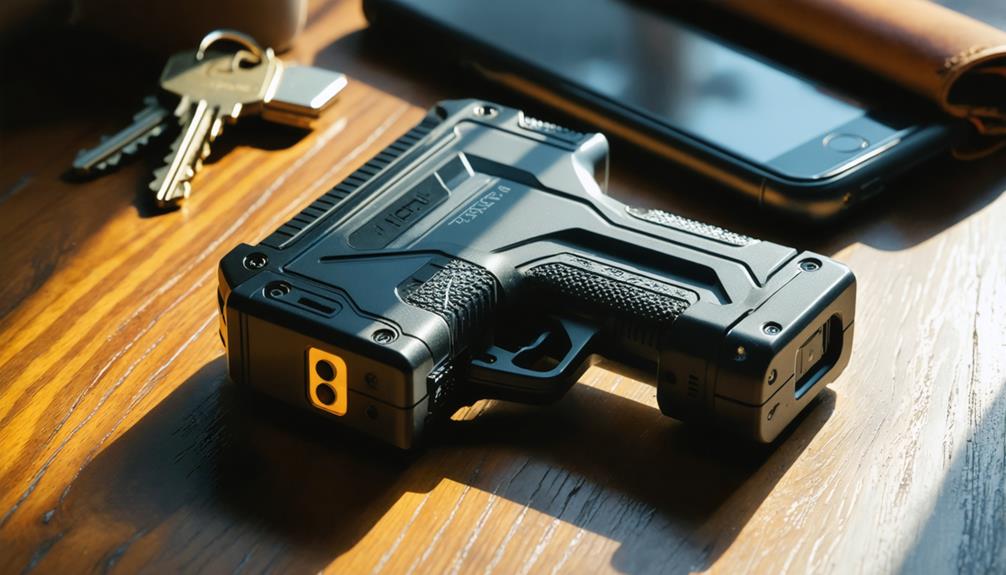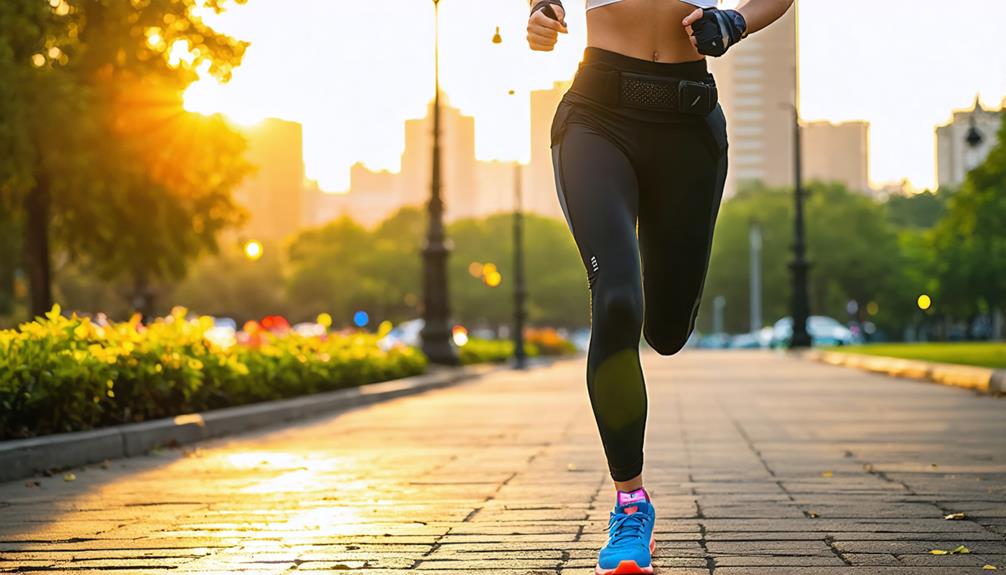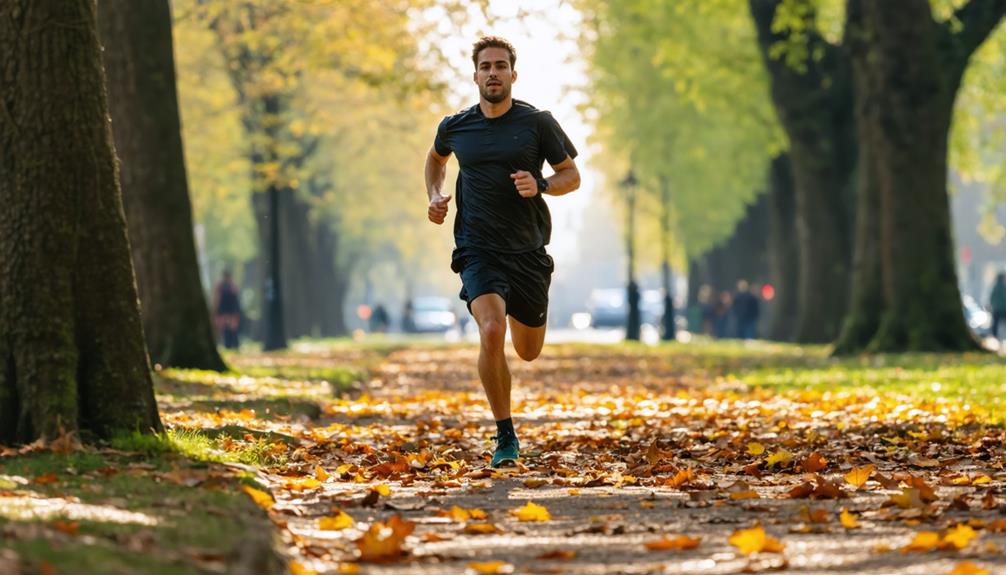
Brainstorm Security Shop

For Orders Over $199

On Any Of Our Products

Details On Refund Page

In today’s increasingly unpredictable world, runners must prioritize personal safety as part of their routine. While the benefits of running are undeniable, the potential risks cannot be overlooked. Awareness and preparedness become crucial allies, urging runners to select safe routes, equip themselves with defensive gear, and master fundamental self-defense skills. Additionally, tools such as personal alarms and mental resilience strategies play a vital role in fortifying a runner’s self defense confidence. How can these elements be seamlessly integrated into one’s running regimen to ensure a harmonious blend of safety and enjoyment? The answer lies in a nuanced approach to runners’ self defense.
Awareness is a critical component of self-defense for runners, serving as the first line of defense against potential threats. By maintaining high levels of situational awareness, runners can effectively identify and evaluate their surroundings to preemptively recognize and mitigate risks. Situational awareness involves being cognizant of one’s environment, understanding the dynamics of the immediate area, and recognizing any irregularities or changes that might signal danger.
Environmental scanning is an essential practice within situational awareness, allowing runners to continuously assess their surroundings. This involves actively observing the environment, noting the presence of other individuals, vehicles, and potential escape routes.
By practicing environmental scanning, runners can make informed decisions about when to adjust their pace, modify their route, or take protective measures.
Runners should also be attuned to auditory and visual cues, which can provide critical information about their environment. Listening for unusual sounds, such as footsteps or vehicles approaching from behind, can serve as early warning signs of potential threats.
Similarly, visual cues like sudden movements or suspicious behavior warrant increased vigilance. Ultimately, maintaining awareness is a proactive measure that empowers runners to respond effectively to unforeseen situations, enhancing their safety and confidence.
Selecting safe running routes is a crucial aspect of self-defense that requires careful planning and consideration.
Whether you are engaging in urban running or exploring trail safety, route planning is essential to minimize risks and enhance security. By being mindful of neighborhood awareness and utilizing available tools, runners can make informed decisions about their running paths.
Here are key strategies for choosing safe running routes:

When considering defensive running gear, selecting appropriate protective clothing is essential for enhancing both safety and comfort.
Personal alarm devices serve as a crucial tool for runners, providing an immediate means to alert others in case of an emergency.
Additionally, lighted safety accessories are invaluable for maintaining visibility, especially during early morning or evening runs, ensuring that runners remain conspicuous to others.
Equipping oneself with the right protective clothing is essential for runners who prioritize safety during their workouts. The selection of appropriate attire not only enhances safety but also optimizes performance.
To ensure maximum protection and comfort, consider the following clothing choices:
Integrating these elements into your running attire enhances safety and ensures a more effective and enjoyable workout experience.
For runners seeking to enhance their personal safety, incorporating personal alarm devices into their defensive running gear is a prudent choice. These devices are designed to deter potential threats and alert nearby individuals in case of an emergency.
There are various alarm types available on the market, each tailored to suit different needs and preferences. Some personal alarms emit a loud siren, typically exceeding 120 decibels, which can startle an attacker and attract attention. Others offer discreet designs that blend seamlessly with athletic wear, allowing runners to maintain a low profile while still having access to protection.
When selecting a personal alarm device, battery life is a critical consideration. Alarms powered by replaceable batteries often provide longer usage periods, ensuring the device remains functional during extended runs. Alternatively, rechargeable models offer convenience and sustainability, allowing users to power their devices as part of their routine.
It is essential to regularly check and test these devices to ensure they are operational when needed. Incorporating personal alarm devices into running routines not only provides a sense of security but also empowers runners to take proactive steps in personal safety.
Lighted safety accessories play a crucial role in enhancing the visibility and security of runners, especially during low-light conditions.
These accessories not only improve reflective visibility, ensuring that runners are seen by motorists and other pedestrians, but they also contribute to the runner’s emotional preparedness by providing a sense of safety and confidence.
Selecting the right gear can make a significant difference in a runner’s overall safety strategy.
Here’s a list of essential lighted safety accessories for runners:
Incorporating these accessories into a runner’s routine can significantly enhance safety and confidence during evening or early morning runs.
In the realm of runner safety, understanding basic self-defense techniques is crucial for personal security.
Key defensive stances form the foundation of these skills, enabling runners to maintain balance and readiness.
Coupled with effective striking techniques and evasive maneuver strategies, these elements empower individuals to respond assertively and efficiently in threatening situations.
Understanding key defensive stances is essential for anyone looking to enhance their self-defense skills, particularly for runners who often find themselves in isolated environments.
A proper defensive posture can make a significant difference in deterring potential threats and preparing for any necessary action. Mastering stance variations can provide runners with the flexibility and balance needed to respond to various situations effectively.
Here are four fundamental defensive stances to consider:
Adopting these stances ensures that runners can maintain control over their environment and react promptly to potential threats.
Mastering effective striking techniques is crucial for enhancing a runner’s self-defense toolkit, providing them with the means to protect themselves when faced with a threat. Runners, often distracted and vulnerable, need to quickly shift from a passive stance to an active defense. The foundation of this transformation involves learning how to deliver powerful punches and quick kicks with precision and control.
Powerful punches are essential for creating distance between the runner and an aggressor. A well-executed punch targets vulnerable areas such as the nose, chin, or solar plexus, aiming to disorient and incapacitate the attacker momentarily. Runners should focus on maintaining a stable base, generating power from the hips, and using the whole body to amplify the force behind each punch.
Quick kicks, on the other hand, serve as effective tools for targeting lower body vulnerabilities, such as the knees or shins, swiftly disrupting an attacker’s balance and mobility. These kicks should be executed with speed and accuracy, ensuring minimal time is spent in a compromised position.
Practicing these techniques regularly in a controlled environment enhances muscle memory, ensuring that in a real-life scenario, a runner can react instinctively and effectively.
While effective striking techniques equip runners with the ability to confront a threat head-on, equally significant is the ability to avoid confrontation altogether through evasive maneuver strategies.
By honing these techniques, runners can enhance their situational awareness and identify potential threats before they escalate. A proactive approach not only minimizes unnecessary conflicts but also empowers runners with the confidence to navigate their environment safely.
To master evasive maneuvers, consider the following strategies:

Personal alarms offer a discreet yet powerful tool for runners seeking to enhance their safety during outdoor activities. These devices serve as an effective deterrent against potential threats by emitting loud noises that can startle an attacker and attract attention. Understanding the various alarm types available and their features is essential for making an informed choice. Some alarms are designed to be worn on the wrist or clipped to clothing, while others may integrate with mobile devices for added functionality. The key is selecting an option that suits personal preferences and the specific environment one frequents.
| Alarm Type | Key Features |
|---|---|
| Wrist Alarms | Easy access, lightweight, rechargeable |
| Clip-on Alarms | Attach to clothing, waterproof, durable |
| Keychain Alarms | Compact, loud sound, battery-operated |
| Mobile Alarms | App-based, GPS tracking, emergency contact |
| Wearable Devices | Multi-purpose, fitness tracking, safety alerts |
When activated, personal alarms not only draw the attention of bystanders but also prompt a swift emergency response. This immediate noise and commotion can be crucial in deterring an attacker and buying valuable time. By integrating personal alarms into their running routine, individuals can significantly bolster their safety and peace of mind.
Enhancing personal safety with tools like alarms is just one aspect of a runner’s security strategy. Building confidence and skills forms the cornerstone of a comprehensive approach to self-defense. By focusing on mental resilience and empowerment strategies, runners can transform fear into empowerment. Developing these attributes involves a deliberate practice of both physical and mental exercises.
Runners can effectively communicate their location by utilizing location sharing applications, which allow real-time tracking. Furthermore, sharing their route with emergency contacts ensures prompt assistance if necessary, enhancing safety during their running activities.
Runners should familiarize themselves with self-defense laws, which dictate allowable actions during confrontations. Understanding reasonable force is crucial, as it defines the extent of force permissible to protect oneself without facing legal repercussions.
Several safety apps and runner tools are designed to enhance safety, offering features such as real-time location tracking, emergency alerts, and route sharing. These tools provide an added layer of security for runners during their activities.
Runners can identify potentially dangerous individuals by observing body language cues, such as aggressive posture or evasive movements. Maintaining environmental awareness, including recognizing unusual behavior or unfamiliar individuals, is crucial for ensuring personal safety during outdoor activities.
Upon encountering a threat, individuals should prioritize personal safety by immediately distancing themselves from the situation. Contact emergency response services, provide detailed information, and seek safe shelter while awaiting assistance. Document the incident for future reference.
Incorporating awareness and preparedness into running routines significantly enhances personal safety for runners. Prioritizing the selection of secure routes, utilizing defensive gear, and mastering basic self-defense techniques enable effective responses to potential threats. The integration of personal alarms and mental resilience training further strengthens confidence and preparedness. By adopting a comprehensive approach that combines these elements, runners can mitigate risks and ensure a safer, more enjoyable experience while engaging in their physical activity.
Brainstorm Security Shop
1867 Caravan Trail
Ste 105
Jacksonville, FL 32216
Call us toll free: (800) 859-5566